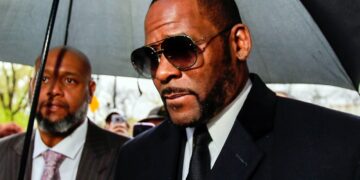The mind of a psychopath is a curious entity. Over the last ten years, neuroscience and psychology have become progressively focused on the brain differences between individuals and specifically trying to identify what makes an individual kill another human being. While not all killers are psychopaths, psychopathic traits are seen in many of them, as are a combination of environmental factors.
As a society, we are fascinated by true crime. We watch documentaries on serial killers, and programmes following police forces and homicide units. We are interested in forensics and crime scene investigations and we find people who kill intriguing. For most of us, taking the life of another out with self-defense is an act we cannot imagine. We have an innate brake system, something which tells us that this is an act we just cannot carry out. Those who seemly do kill without conscience, guilt, or remorse and do this repeatedly pique our curiosity and our desire to understand how and why
Inside The Mind Of A Psychopath
In psychiatry being a psychopath is not a diagnosis. It is a term used more commonly in forensic science and is used very loosely in the media to describe people who commit acts that are particularly gruesome or brutal.
A psychopathic personality is one that displays a number of behavioral traits which range from being cunning and devious to manipulative and charming. This is a personality that can blend seamlessly into society.
Ted Bundy is a typical example of a psychopathic killer. He was an individual who manipulated his victims into trusting him by pretending he was injured. He could change his persona to fit almost any environment and he was highly intelligent with a great deal of planning going into his attacks, at least during his early activity.
Most assume a psychopath is an insane, mad individual who can be spotted in the crowd, but the reality is quite different. As explored in depth in his excellent book Inside The Mind of a Psychopath, writer Paul Sorensen gives a true insight into what it really means to be a psychopath. He describes how to recognize a psychopathic personality and the research into the psychopathic mind profiling some of the worst-known psychopaths in history.
The most common features identifiable in the mind of a psychopath are a lack of empathy and a lack of true feelings for others. While no one is born a psychopath, we are all born with some degree of empathy. Our environment in our early years is where this empathy will manifest and continue, as it does with most of us, or where it will fritter away until it is not there at all.
The Mind of a Psychopathic Killer
As highlighted by Dr. James Fallon, Professor of Psychiatry and Human Behaviour at the University of California, psychopaths are “believable but not readable as they have no feelings to read through their eyes or body language”.
These are individuals who have a very low response to stress, they are callous and they do not connect with others in the same way you and I do. From a criminal perspective, they can be cruel, calculating, and aggressive. They do not take responsibility for their actions as according to them, their actions are caused by the behavior of other people. In this way there is an overlap between psychopathic traits and narcissistic traits and equally this lack of responsibility for behavior and actions can prove very dangerous.
Recommended Books
The Psychopath Inside by Prof. James Fallon
The Evil That Men Do by Roy Hazelwood
The Anatomy of Violence by Dr. Adrian Raine
Mindhunter by John Douglas
The Psychopath Scale
Dr. Robert Hare developed the psychopath scale which is considered the most reliable and effective instrument to measure psychopathy. Originally designed to assess incarcerated adult males it has since been expanded for wider use but is still mainly used within criminality.
The scale covers behavior such as communication abilities, interaction and manipulation of other people, lying and deviousness, and how people behave socially. Scores range from 0 – 40 and the higher the score for an individual, put simply, the more of a psychopath that person is.

The Interconnecting Behavioural Traits of a Psychopath
This information is of course very categorical. It relies on someone’s awareness and honesty about their own behavior and attitudes. However, when this information is combined with the history of an individual, their behavior and their experiences, their brain structures, brain patterns, genetics, and environmental influences, an overall picture of that individual can be gained.
Nature vs Nurture
Psychology has long debated the issue of nature and innate characteristics, against nurture and the effect of environment on a growing and developing individual. The area of criminology and forensic science is no different, asking whether criminals are born or made. We are certainly seeing increasing evidence of the importance of childhood and recognizing psychopathic traits in children along with those crucial years of adolescence and the significance of teenage brain development in decision-making and behavior.
The development of technology within brain science has allowed these questions to be assessed more fully and from a scientific perspective. Functional brain scans such as functional magnetic resonance imaging (fMRI) and positron emission tomography (PET) scanning have revealed some very interesting differences between those considered to be psychopaths and those who are not.
The brain of the psychopathic killer and a shocking discovery about Dr. Fallon’s own brain
The Brain Scans of Psychopaths
What is interesting about psychopaths is the evidence that their brain regions do not function in the same way ours do. Functional MRI measures blood flow in the brain and when an individual is performing a task, whether it be looking at images or listening to music, scientists are able to see in real-time which areas of the brain are active during these tasks and which are not.
Science has learned over the years which brain areas would be expected to activate when exposed to certain types of stimuli in the normal human brain. The brain of a psychopath it appears does not do this; in fact, their brains barely react at all.
When shown distressing images designed to elicit a reaction, there is no behavioral response and there is no stress response visible in a psychopath’s brain. They are indifferent to these images and do not react emotionally to them. Psychopaths may voice their disgust at such images but they do not feel disgusted. These brain imaging studies for the first time are able to go behind the words spoken by psychopaths, often carefully chosen to meet expectations, and view scientifically how their brain and emotions are operating.
Imaging Genetics in Psychopathic Killers
Over the last five to ten years imaging genetics has developed in psychiatry. In the early 1990s a gene was discovered, which became known as the ‘warrior gene’, that scientists have linked to violence and aggression. A Dutch family has been cited as an example where all male family members were missing this particular gene and all showed extreme violence and consistent aggressive behavior (See Brunnet et al, 1993). Of course, the origins of violence cannot be simply linked to one gene, and genetics is unquestionably intertwined with social experience and how genes have been molded to develop over an individual’s life span. Still, the theory and science surrounding the warrior gene adds some interesting data to the debate.
Further studies by Kings College in London in 2002 have highlighted that even with a form of this gene present, if less gene expression than normal occurs, more of the neurotransmitter serotonin can be released which along with early exposure to abuse can lead to teenagers in particular to show higher levels of aggression (See Caspi et al, 2002). Serotonin is released in anger and has been directly linked with psychopathy. According to Dr. Fallon the serotonin transporter is associated with violence but if a child is showered with love in their early years they are unlikely to become violent, however, a child surrounded by violence is more likely to show violence in later life.
Childhood Abuse and Psychopathic Killers
Studies have shown early childhood abuse is a factor among psychopathic killers. John Wayne Gacy, the ‘Killer Clown’, Gary Ridgeway, the ‘Green River Killer’, and Ed Gein, the notorious American serial killer, all suffered childhood abuse. Furthermore, John Wayne Gacy, Henry Lee Lucas, Ed Gein, and possibly Dennis Rader, the ‘BTK‘ killer, all suffered childhood incidents of head trauma.
The connection between an abused childhood and anti-social behavior as an adult is often thrown around loosely. Furthermore, some feel it is given as an excuse and a ‘get out clause’ for unacceptable and particularly violent behavior. Certainly, not all abused children grow up to become abusers, criminals, and murderers. Evidence, however, does show a pattern between childhood abuse and psychopathic serial killing and it also suggests the younger the age of the child at the time of the abuse, the worse the effect on that growing individual. Those first few years of life are the most important for risk factors. After a child turns 5 years old the risk to their developing personality reduces markedly.
Thou Shalt Not Kill: Knowing Right from Wrong
We all know it is wrong to kill or at least that is the presumption we make. The act of murder is so abhorrent to the majority of us we assume everyone feels the same and people who don’t must be in the grips of mental illness.
We hold an assumption that we all have the same brain that functions in the same way. Moreover that we, therefore, all have the same control and choices over our behavior; however the simple fact is, this is just not the case.
Psychological studies suggest that psychopaths grow up learning what is perceived as right and wrong. Through watching other people’s behavior and society’s response to that behavior, they gain an understanding of what is morally and ethically wrong. But, just because they don’t feel it themselves does not mean they do not understand it and acknowledge it. However, this learned knowledge takes time to obtain. A young child, for example, may not yet have learned this objective understanding and are thereby led more by their impulses and internal feelings, with less regard for society’s rules, judgment, and potential consequences.

Acceptance of Biological Explanations for Crime
Neuroscience has come a long way over the past two decades and we now have a much deeper understanding of different areas of the brain, their functions, and their relationship to our behavior, particularly with regard to forensic psychology and the criminal mind.
To seriously consider biological factors within the causes of crime has only recently been accepted. Social and environmental causes had always been the leading theories and explanations in the past. Dr. Adrian Raine, a Professor at the University of Pennsylvania was one of the first to raise these issues and originally encountered many barriers within the world of academia.
In Dr. Raine’s largest study to date, he used Positron Emission Tomography (PET) to take brain scans of 41 convicted killers and compared them directly against 41 ‘normal’ individuals of a similar age and profile. The results highlighted clear differences in brain activity with an area of decreased activity visible in the killer’s brains in the area of the pre-frontal cortex of the brain. This area is at the front of the brain, just behind our forehead, and is responsible for analyzing thoughts and regulating our behavior.
His determined focus and belief in the results of his research maintained his stance and he is today considered one of the leading experts on this topic. His book, The Anatomy of Violence, initially berated for its focus on the biological roots of criminal behavior has now received critical acclaim and showcases his 35 years of study within this field.
What makes a psychopathic killer?
The importance of more traditional psychological and sociological approaches and their applications to the causes of crime should not be underestimated, nor should such biological and genetic neurocriminological explanations replace them completely.
However, as pointed out by Dr. Raine:
“If we buy into the argument that for some people factors beyond their control, factors in their biology, greatly raise the risk of them becoming offenders, can we justly turn a blind eye to that?”
Genetics and biology work hand in hand with psychology and environmental factors; it is not so much nature or nurture but nature and nurture.
Psychology of Crime in the Courtroom
In recent years, the United States legal system has started to use neurocriminology in serious criminal cases as mitigating evidence to explain their clients’ actions. The debate is building on what place this has in the courtroom and what it may mean for the criminal justice system.
We can only assume this will continue and develop into the future which holds its own moral and ethical debates for the punishment of criminals in this regard. The psychology of the criminal mind and brain is a complicated matter. You cannot take a sample of the mind and test it to obtain a result. It is about the analysis of behavior, tendencies, characteristics, and behavioral traits which all combine to give a picture of an individual, and none have a simple cause-and-effect measure.
Many of these behavior traits overlap and there is no clear singular trait, gene or childhood experience which can be held responsible for criminal behavior, or in the case of the psychopathic killer, murder. The development of science within forensic psychology has enabled the examination of brain scans, genetics, and behavior to see how such aspects combined could have led an individual to kill.
Not all individuals with these traits will go on to commit a crime and be psychopathic killers, with Dr. James Fallon being a prime example. However, it has provided us with the strongest measurable indications of behavior and an understanding of why that behavior may manifest and this holds enormous potential for the future.
- Brunner, H. G., Nelen, M. R., van Zandvoort, P., Abeling, N. G., van Gennip, A. H., Wolters, E. C., and Van Oost, B. A. (1993). X-linked borderline mental retardation with prominent behavioral disturbance: phenotype, genetic localization, and evidence for disturbed monoamine metabolism. American Journal of Human Genetics, 52(6), 1032–1039.
- Caspi, A., et al (2002) Role of Genotype in the Cycle of Violence in Maltreated Children, Science, vol 297, pp851 – 854
- LaBrode, R.T. (2007) Etiology of the Psychopathic Serial Killer: An Analysis of Antisocial Personality Disorder, Psychopathy, and Serial Killer Personality and Crime Scene Characteristics, Brief Treatment and Crisis Intervention, Vol 7, Iss. 2, pp151- 160
- Mitchell, H., and Aamodt, M.G. (2005) The Incidence of Child Abuse in Serial Killers, Journal of Police and Criminal Psychology, Vol, 20, No. 1, pp40 – 47
Guy, F. (2015, Jul 08). Inside The Mind of a Psychopath: The Psychopathic Killer. Crime Traveller. Retrieved from https://www.crimetraveller.org/2015/07/inside-mind-of-psychopath-psychopathic-killer/
Prefer Audiobooks? Audible 30-Day Free Trial with free audiobooks.








































Hi there, it is certainly a very complex area that is advancing all the time. There is so much new technology and methodology now it can be difficult to keep up with it all. Still I think the potential of neuroscience to help us gain an understanding of people who kill and the complexities of psychopathology is huge. Thanks for stopping by!
You actually make it appear so easy together with your presentation, however, I find this matter to be actually one thing that I feel I might never understand. It seems too complicated and very huge for me. I am looking forward to your subsequent work, I’ll attempt to get the hang of it!
Hey there, thank you very much, I am glad you enjoyed the post and the site! 🙂
Excellent post. I certainly love this site. Thanks!
Great post! I had no idea people were looking at the brains of criminals and that psychopaths can be identified through them. Makes me wonder where science is going to go next. The idea that there could be a disorder or condition associated with criminal behaviour due to their brain structures and functions being different is quite a question for the criminal justice system. I wonder where this is going to be in 10 years time?
Thanks Valerie! Glad you liked it. The developing world of science and the criminal brain is getting more and more interesting. I think as more research is carried out and I suppose validated we will see what impact this has on the criminal justice system and especially in defence arguments. Just as mental illness can be a mitigating factor it is possible criminal brains may go the same way. Definitely an area to watch!
But the question remains, that what sorts of stimuli , intimidate them to become injurious to others… it is a settled case for the pshycopaths that their that the element of empathy and event better, the aspect of SuperEgo is missing , from their Functional Brain, but what are the Stimuli which makes them react in such injurious manner, even with this very same dysfunction why some people do not choose to become murders and some choose to do so ? ……Apart from that , the Article was full of Materials, lesser conclusive more informative, it was a great pleasure for the evening tea ……
Very descriptive post, I liked that a lot.
Will there be a part 2?
Hi Sol, there may indeed. There are some really interesting new research studies being published at the moment looking at the brains of psychopaths and their behaviour, especially the reward-cycles within the brain and how psychopathic individuals may process information, risk and consequences differently to the rest of us, so keep an eye out for some new articles as a result!
Hi! This is my 1st commеnt here so I just wanted tⲟ give a quick shout out and tell you I genuinely enjoy readіng your posts. Thanks!
Great post and site. Good that Google listed so I was able to get here. This site will go in my bookmarks from now on.
Interesting article, thanks. I’m curious if there is a link between psychopathy and pupil dilation (eyes turning black). Can all psychopaths do this or just a certain subset? Or would it happen to anyone if they became angry enough? Have any studies been done, do you know?
Hi Julie, I’m not aware of any studies that have looked into this specifically with psychopaths. It might worth having a look for the current research on the topic in general and see if there are any references in that literature regarding a link, that should be a good starting point.